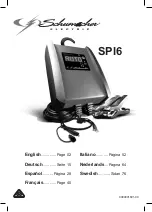
Vehicle handling with damaged tires
Vehicles driven with a damaged tire will handle
differently, potentially leading to conditions such
as the following:
▷
Greater likelihood of swerving off course.
▷
Longer braking distances.
▷
Changed self-steering properties.
Modify your driving style. Avoid abrupt steering
maneuvers or driving over obstacles, for instance
curbs or potholes.
Final tire failure
Vibrations or loud noises while driving can indi‐
cate the final failure of a tire.
Reduce speed and stop; otherwise, pieces of the
tire could come loose and cause an accident.
Do not continue driving. Contact a dealer’s serv‐
ice center or another qualified service center or
repair shop.
System limits
Temperature
The tire inflation pressure depends on the tire's
temperature.
Driving or exposure to the sun will increase the
tire's temperature, thus increasing the tire infla‐
tion pressure.
The tire inflation pressure is reduced when the
tire temperature falls again.
These circumstances may cause a warning
when temperatures fall very sharply.
Sudden tire pressure loss
The system cannot indicate sudden serious tire
damage caused by external circumstances.
Failure performing a reset
The system does not function properly if a reset
has not been carried out, for instance a flat tire is
reported though tire inflation pressures are cor‐
rect.
Malfunction
The yellow warning light flashes and is
then illuminated continuously. A Check
Control message is displayed. It may not
be possible to identify tire pressure losses.
Examples and recommendations in the following
situations:
▷
A wheel without TPM wheel electronics is
mounted: have it checked by a dealer’s serv‐
ice center or another qualified service center
or repair shop as needed.
▷
A wheel without TPM wheel electronics, for
instance an emergency wheel, is mounted:
have it checked by a dealer’s service center
or another qualified service center or repair
shop as needed.
▷
Malfunction: have system checked by a deal‐
er’s service center or another qualified serv‐
ice center or repair shop.
▷
The system was unable to complete the re‐
set. Perform a system reset again.
▷
Interference caused by systems or devices
with the same radio frequency: after leaving
the area of the interference, the system auto‐
matically becomes active again.
Declaration according to NHTSA/
FMVSS 138 Tire Pressure
Monitoring System
Each tire, including the spare (if provided) should
be checked monthly when cold and inflated to
the inflation pressure recommended by the vehi‐
cle manufacturer on the vehicle placard or tire in‐
flation pressure label. (If your vehicle has tires of
a different size than the size indicated on the ve‐
hicle placard or tire inflation pressure label, you
should determine the proper tire inflation pres‐
sure for those tires.) As an added safety feature,
your vehicle has been equipped with a tire pres‐
sure monitoring system (TPMS) that illuminates
a low tire pressure telltale when one or more of
your tires is significantly under-inflated. Accord‐
ingly, when the low tire pressure telltale illumi‐
Seite 150
CONTROLS
Safety
150
Online Edition for Part no. 01405A2CF16 - II/21
Summary of Contents for X2 2021
Page 2: ...Online Edition for Part no 01405A2CF16 II 21...
Page 59: ...Owner s Manual media AT A GLANCE 59 Online Edition for Part no 01405A2CF16 II 21...
Page 283: ...Care MOBILITY 283 Online Edition for Part no 01405A2CF16 II 21...
Page 287: ...Appendix REFERENCE 287 Online Edition for Part no 01405A2CF16 II 21...
Page 300: ...BL5A2CF1600H 01405A2CF16 ue Online Edition for Part no 01405A2CF16 II 21...
Page 301: ......
Page 302: ......
















































